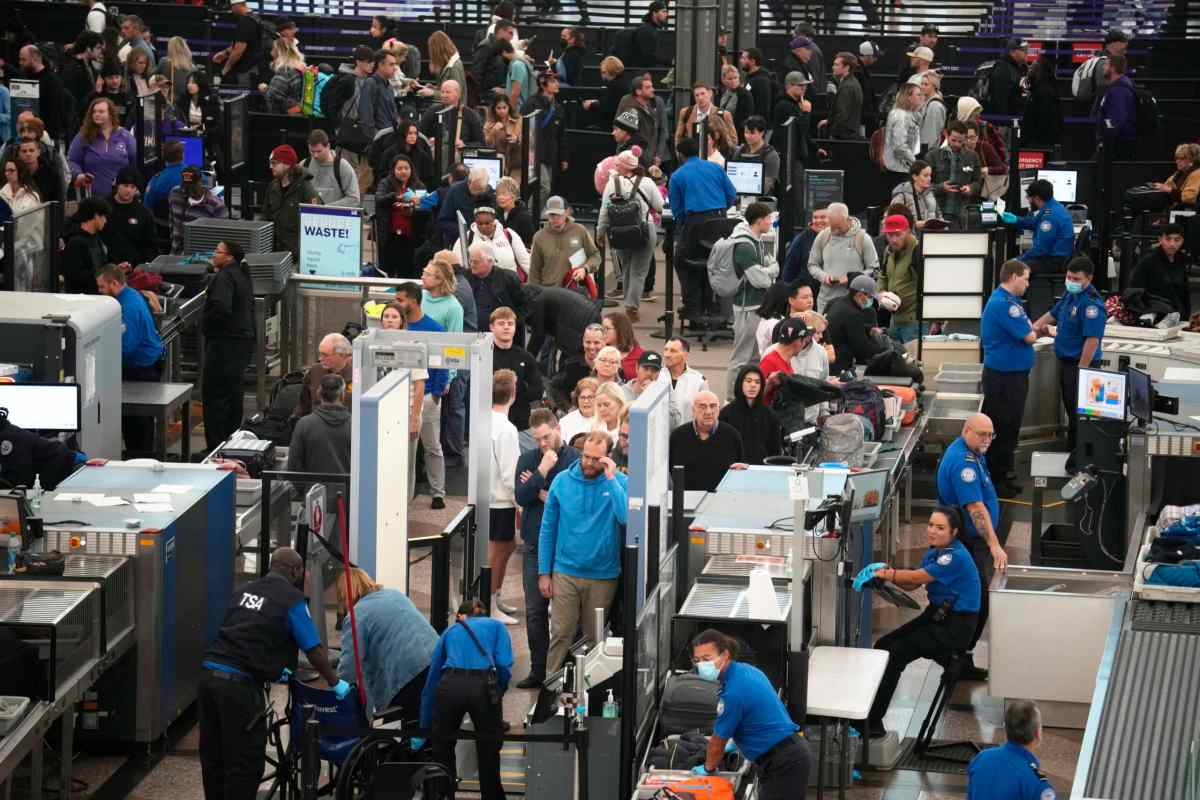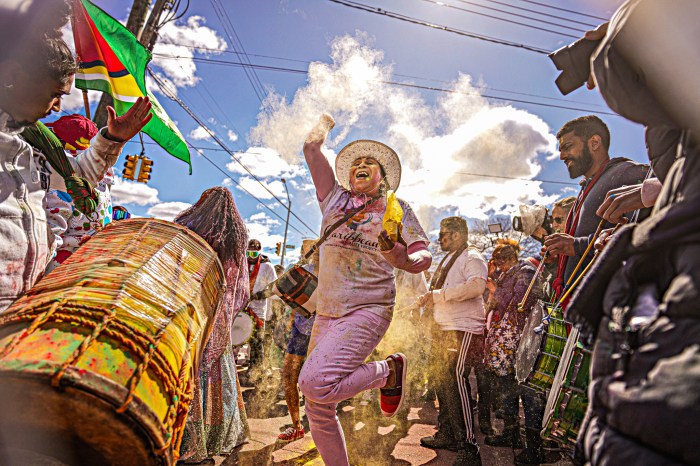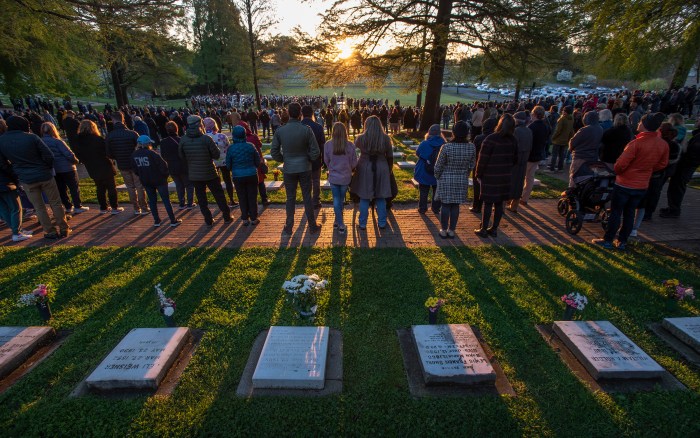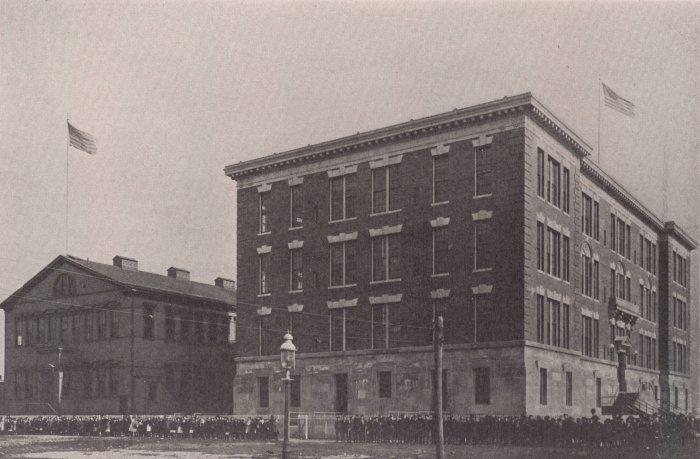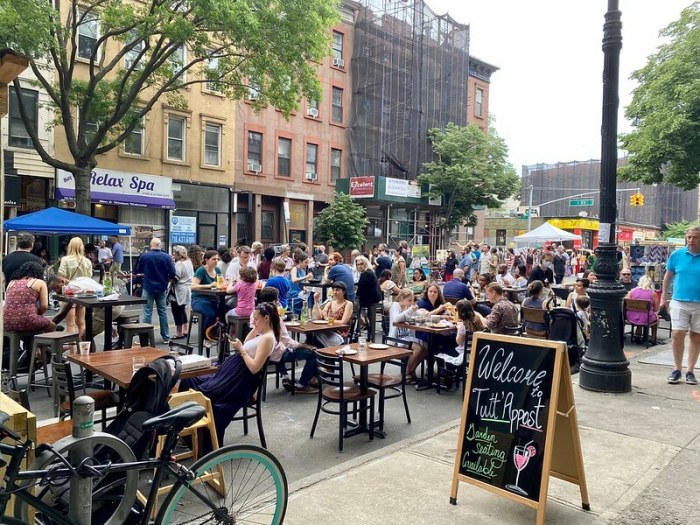Despite inflation and memories of past holiday travel meltdowns, millions of people are expected to hit airports and highways in record numbers over the Thanksgiving break.
The busiest days to fly will be Tuesday and Wednesday as well as the Sunday after Thanksgiving. The Transportation Security Administration expects to screen 2.6 million passengers on Tuesday and 2.7 million passengers on Wednesday. Sunday will draw the largest crowds with an estimated 2.9 million passengers, which would narrowly eclipse a record set on June 30.
Meanwhile, AAA forecasts that 55.4 million Americans will travel at least 50 miles (80 kilometers) from home between next Wednesday and the Sunday after Thanksgiving, with roads likely to be the most clogged on Wednesday.
The weather could snarl air and road traffic. A storm system was expected to move from the southern Plains to the Northeast on Tuesday and Wednesday. Parts of Maine, Vermont and northern New Hampshire are expected to get 3 to 7 inches (7 to 17 centimeters) of snow between Tuesday night and Wednesday.
U.S. Transportation Secretary Pete Buttigieg said during a news conference Monday that the government has tried to better prepare for holiday travel by hiring more air traffic controllers, opening new air routes along the East Coast and providing grants to airports for snowplows and deicing equipment. He warned travelers to check road conditions and flight times before leaving home.
“Mother Nature, of course, is the X factor in all of this,” he said.
The good news for travelers by plane and car alike: Prices are coming down.
Airfares are averaging $268 per ticket, down 14% from a year ago, according to the travel site Hopper.
Gasoline prices are down about 37 cents a gallon from this time last year. The national average was $3.29 per gallon on Tuesday, according to AAA, down from $3.66 a year ago.
A survey of GasBuddy users found that despite cheaper pump prices, the number of people planning to take a long driving trip this Thanksgiving hasn’t changed much from last year. Patrick De Haan, an analyst for the price-tracking service, said inflation has cooled but some things like food are still getting more expensive. Consumers are also charging more on credit cards and saving less.
“Sure, they love the falling gas prices, but a lot of Americans spent in other ways this summer and they may not be ready to open their wallets for Thanksgiving travel just yet,” De Haan said.
Jennifer Bonham opted to take the train from New York to Kansas City to spend Thanksgiving with her fiance after checking out flights and finding them “astronomically expensive.”
“My fiance had an idea. He’s like, I wonder if there are trains? So we go to looking and it was honestly the best price that we got. I don’t have any money. I’m a single mom. The cheaper, the better,” said Bonham, while switching trains at Chicago’s Union Station with her teenage daughter.
Thanksgiving marks the start of the holiday travel season, and many still haven’t shaken last December’s nightmare before Christmas, when severe winter storms knocked out thousands of flights and left millions of passengers stranded.
Scott Keyes, founder of the travel site Going, is cautiously optimistic that holiday air travel won’t be the same mess. So far this year, he said, airlines have avoided massive disruptions.
“Everyone understands that airlines can’t control Mother Nature,” Keyes said. “What really irks people are the controllable cancellations — those widespread disruptions because the airline couldn’t get their act together because their system melted down the way Southwest did over Christmas.”
Indeed, Southwest didn’t recover as quickly as other carriers from last year’s storm when its planes, pilots and flight attendants were trapped out of position and its crew-rescheduling system got bogged down. The airline canceled nearly 17,000 flights before fixing the operation. Federal regulators told Southwest recently that it could be fined for failing to help stranded travelers.
Southwest officials say they have since purchased additional deicing trucks and heating equipment and will add staff at cold-weather airports depending on the forecast. The company said it has also updated its crew-scheduling technology.
U.S. airlines as a whole have been better about stranding passengers. Through October, they canceled 38% fewer flights than during the same period in 2022. From June through August — when thunderstorms can snarl air traffic — the rate of cancellations fell 18% compared to 2022.
Even still, consumer complaints about airline service have soared, according to the U.S. Department of Transportation. There have been so many complaints, the agency says, that it has only compiled figures through May.
The airlines, in turn, have heaped blame on the Federal Aviation Administration, which they say can’t keep up with the growing air traffic. In fact, the Transportation Department’s inspector general reported this summer that the FAA has made only “limited efforts” to fix a shortage of air traffic controllers, especially at key facilities in New York, Miami and Jacksonville, Florida.
Meanwhile, staffing levels in other parts of the airline industry have largely recovered since shedding tens of thousands of workers early on in the pandemic. Passenger airlines have added more than 140,000 workers — an increase of nearly 40% — according to government figures updated last week. The number of people working in the business is the largest since 2001, when there were many more airlines.



